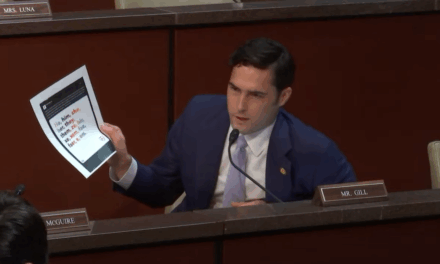In recent times, the ongoing demonstrations against U.S. Immigration and Customs Enforcement (ICE) have become a focal point for various media outlets, including CNN and MSNBC. The coverage from these networks has emphasized a narrative that frames these protests as “mostly peaceful” despite reports and images depicting escalating tensions and unrest in many areas.
The terminology “mostly peaceful” has sparked significant debate regarding the portrayal of these protests in the mainstream media. On one hand, the usage of such language aims to highlight the non-violent intentions of a substantial number of participants who gather to express their dissent against ICE’s policies. On the other hand, critics argue that it downplays instances of violence, vandalism, and confrontations that have occurred during these events.
Protests against ICE have surged in recent years, particularly following high-profile incidents were seen as unjust acts of immigration enforcement, including family separations and increased deportations. These demonstrations have been characterized by a mixture of peaceful assemblies and, at times, chaotic confrontations with law enforcement. Critics of ICE argue that the agency perpetuates systemic inequalities and contributes to a culture of fear among immigrant communities.
Recent protests have highlighted intense feelings surrounding immigration policies, particularly during election cycles when immigration reform becomes a heated topic. Demonstrators have taken to the streets in cities across the nation, from Los Angeles to New York City, demanding an end to ICE operations and advocating for immigrant rights. While many protests start peacefully, reports have surfaced illustrating instances where tensions escalated, leading to violence, property destruction, and confrontations with law enforcement.
CNN’s and MSNBC’s coverage has focused largely on the peaceful intentions of participants, often quoting organizers who stress that their protests aim to raise awareness about human rights issues linked to immigration enforcement. These networks have reported on the majority of peaceful gatherings, often juxtaposing them with isolated incidents of violence. By maintaining a focus on the overarching goal of the demonstrations—advocating for immigrant rights—these outlets have framed the narrative in a manner that seeks to paint the protests in a more favorable light.
Critics of this coverage, however, argue that the insistence on labeling protests as “mostly peaceful” fails to adequately address the larger context of the unrest. In incidents where clashes have occurred between protesters and law enforcement, traditional media have faced scrutiny for their handling of information, with detractors suggesting they are downplaying violence that contradicts the “peaceful” narrative. The debate amplifies when considering how such coverage may affect public perception of both the protests and ICE’s operations.
Furthermore, the backlash against ICE is not limited to conventional protesters. In some areas, groups have resorted to more extreme methods, including vandalism and confrontation with ICE facilities, prompting law enforcement to intervene. This has led to a complicated socio-political landscape where activists advocate against not just ICE’s policies but also the methods employed by various activists in expressing their dissent. The resultant atmosphere is one where public trust in media narratives is increasingly questioned.
The characterization of protests as “mostly peaceful” is not a new phenomenon; it has been witnessed in various national movements including the Black Lives Matter protests and other social justice events. Similarly, during the protests in 2020 against police brutality, media discussions often revolved around categorizing events based on violence levels. In almost all cases, this type of categorization has stirred discussions about media bias and the responsibility of news organizations to provide a complete and accurate portrayal of events.
In recent weeks, a number of incidents have drawn attention to the tensions surrounding ICE protests. For instance, in various cities, clashes between demonstrators and law enforcement have resulted in injuries on both sides. Reports of vandalism against ICE facilities have raised concerns among local authorities about the extent of unrest and the need for a more robust police response to safeguard public order.
In the midst of these circumstances, social media plays a significant role in shaping narratives. Many activists utilize platforms like Twitter and Instagram to broadcast live updates, showcase footage from protests, and share personal testimonies on their experiences during these events. Some users closely monitor news reports, calling out discrepancies between what media outlets report and what they observe on the ground. The disparity between social media narratives and traditional media coverage can have ramifications for both public perception and policy discussions regarding immigration.
As the debate surrounding ICE continues, it remains essential for media organizations to navigate their reporting with an eye towards accuracy and contextualization. The protests against ICE symbolize a broader societal struggle regarding immigration, human rights, and the norms that govern law enforcement. Ultimately, striking a balance in reporting—acknowledging the peaceful intentions of many demonstrators while also recognizing instances of violence and unrest—is crucial in maintaining journalistic integrity.
Media coverage of protests against ICE is likely to remain a contentious issue as long as activism persists. Whether framed as “mostly peaceful” or not, the conversations surrounding these protests will continue to evolve. The quest for justice and reform regarding immigration policies will undoubtedly keep pushing activists into the streets, leaving spaces for dialogue, dissent, and sometimes violence. Without a comprehensive understanding and representation of these dynamics, media outlets risk losing credibility and the trust of the very communities they aim to inform.
In conclusion, the insistence by some news outlets on framing the demonstrations against ICE as “mostly peaceful” speaks to the broader challenges within media representation in an era where sensationalism and accuracy often struggle for dominance. As the narrative unfolds, both the media and the public must navigate the complex realities of protest, unrest, and the underlying issues that fuel these movements. The ongoing complexities surrounding immigration policies and civil liberties will persist to ignite passionate responses from both supporters and opponents. What remains vital is the commitment to fair and balanced reporting that not only reflects the intentions of demonstrators but also acknowledges the multifaceted and sometimes volatile nature of such public expressions.
































